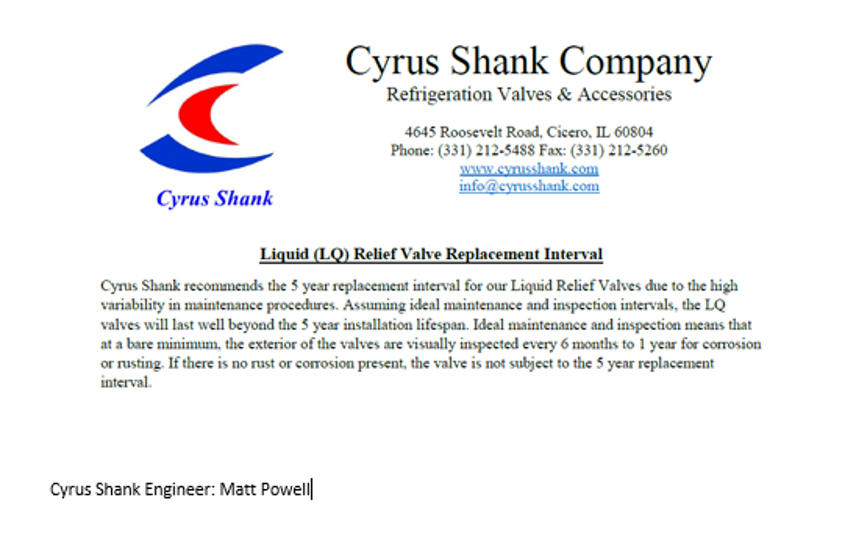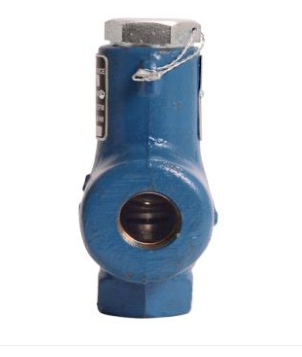IIAR’s Bulletin 110 gives us 3 options for relief valve replacement if we consider them RAGAGEP outside of manufactures requirements.
- Every five (5) years from the date of installation. IIAR originally recommended (in 1978) that pressure relief valves be replaced every five years from the date of installation. This recommendation represents good engineering practice considering the design and performance of pressure relief devices; or
- An alternative to the prescriptive replacement interval, i.e., five years, can be developed based on documented in-service relief valve life for specific applications using industry accepted good practices of relief valve evaluation; or
- The manufacturer’s recommendations on replacement frequency of pressure relief devices shall be followed.
-
EXEMPTION: Relief devices discharging into another part of the closed-loop refrigeration system are not subject to the relief valve replacement practices stated above.
For over 3 decades now manufactures of equipment have used back pressure regulators (BPR) and gas relief valves measured in standard cubic feet per minute as a normal hydrostatic reliefs. Hydrostatic reliefs are a relief that relieve internal the the refrigeration system and not to a relief header (atmosphere, water, flare system). When relieving internal there can be no chance of internal corrosion due to no oxygen or moisture being present.
A recent article published by a PSM/RMP consultant tries to explain the reason for expected relief valve change out on hydrostatic reliefs to be every 5 years because that is what the manufacture told them. But Cyrus Shanks cut sheets and websites contradict this reasoning. Relief valves that relief internal do not need to be replaced every five years, they only are recommended to be replaced if they have ever lifted. Particular valves in story are Cyrus Shank 803LQ Reliefs which are somewhat new to the industry because they are measured in gallons per minute (GPM) and are designed for internal liquid release.
At this link you will see the following: Cyrus Shank marketing their valves to be installed longer and not follow normal replacement schedules due to relieving internally.

Remember, ultimately your manufacture suggestions will outweigh suggested practices from a bulletin from IIAR. If Cyrus Shank changes their product catalog and cut sheets and wants their hydrostatics replaced every 5 years then that is what you are up against if you choose their valve. However, that is not what is published or supported by their website today.
- They don’t give us a time line for their hydrostatics service use
- They market they can be in use longer then a general relief valve discharge to (atmosphere, water, or flare)
- They only suggest replacing if it has lifted as suggested in IIAR’s bulletin 110
GCAP is not aware of a single manufacture that requires the 5 year replacement interval when using a relief as a hydrostatic relief relieving internal.
Add at a later date is a letter below from Matt Powell (Engineer at Cyrus Shank) defending on the position not to change in 5 years when it relieves internal.



